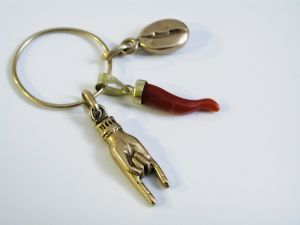Video Review Series, Part 2: The Effective Video Apology “DOs” and “DON’Ts”
“The only way to put out a social media fire is with social media water,” says Ramon DeLeon, managing partner of several Chicago-area Domino’s Pizzas stores, and he should know, as his video apology campaign back in 2009 was hailed as a big success by social media gurus. My 2010 video apology review wouldn’t be complete if I didn’t mention this benchmark case first. It all started when Amy Korin decided to order a Domino’s pizza. After waiting for over an hour for her pizza to be delivered, she discovered that the pizza wasn’t what she ordered. When she complained about it on Twitter, Ramon DeLeon took notice. He contacted her immediately, informing her that the new pizza was on its way and promising to make up for the mistake. And make up is what he did. The following morning Amy Korin received his tweet with a link to his personal YouTube apology to her. Duly impressed, she forwarded the link to a few people. And before anybody could say “pizza,” the video started spreading around the Internet and quickly became hotter than a wood-burning pizza oven. Many good things happened to Ramon DeLeon’s business since then. And here’s Ramon DeLeon’s famous apology video:
Ramon DeLeon knows not only how to make pizzas, but also how to turn lemons into lemonade. He understands that social media presents a great platform to transform a problem into something positive if it is done right. By turning one unhappy customer into a loyal customer via a social media conversation, he was able to build relationships with many more potential customers who witnessed that conversation. But it all began with a human connection and an honest desire to make it right. Here’s how Ramon DeLeon explains the appeal of social media during an interview at SXSW 2010.
We have seen many public video apologies since then. Some of them were successful, others – not so much. Apology is an intricate interaction, and unfortunately, our own brains can make things more difficult. In her book, A Mind of Its Own: How Your Brain Distorts and Deceives, Cordelia Fine describes our brains’ propensity to justify our own bad behavior as a mistake, unavoidable or beyond our control. However, we are quick to assume bad intentions in others when they act badly. In addition, apologies directly bear on our sense of fairness and social standing. The perception of fairness and improved status are rewards to the brain, which is sensitive to how we are treated and viewed by others. Unfair treatment is a threat to the brain that triggers a stress response and often a strong emotional reaction.
The 2010 video apology examples below all involve someone apologizing on behalf of a corporation. This presents a unique challenge in itself. Social media apology is different from a corporate press release. When people want to assign blame or litigate, they will chose a corporate entity. When they feel frustrated, angry, disrespected and want to yell at someone, they will choose a person. To release an emotional burden, we need a human connection. Corporate entities don’t feel, people do. Businesses struggle with this conundrum in social media: how can a large corporation appear human?
For years, lawyers have advised businesses not to apologize because it could be treated as an admission of the liability in a courtroom. There is growing empirical evidence, however, that challenges this notion. A recent study[PDF] suggests that apologies can help opponents reach legal settlements, especially in employment disputes, because they give the wronged party a sense of justice and satisfaction, resulting in faster settlements and lower demands for damages. The nature of the apology makes a difference. Apologies that accepted responsibility were the most effective in the experiment because participants reported that they gained respect for their counterparts. Emotions play a big role when people decide what course of action they should take against the wrong-doer.
So, what makes an apology effective in re-establishing the sense of fairness, goodwill and respect? Here are some apology “DOs”:
- Be sincere;
- Show humility;
- Show remorse;
- Acknowledge the damage done and the pain caused;
- Accept responsibility;
- Provide an explanation if you have one;
- Commit to a course of action that remedies the problem and prevents it from happening again;
- Ask for cooperation and, if appropriate, enlist help in remedying the situation;
- Keep your promises and do what you said you would do.
And the apology “DON’Ts”:
- Don’t lie;
- Don’t shift the blame;
- Don’t say you are sorry when you are really not;
- Don’t make excuses or justify your actions;
- Don’t detract attention from real issues;
- Don’t say one thing and do the opposite;
- Don’t count on or demand forgiveness.
As you watch these video apologies, which do you feel were successful and why? Which ones failed and why? What else do we need to know about the art and science of effective apology?
1. BP’s CEO Tony Hayward issues a formal apology to address the oil spill in the Gulf of Mexico:
Earlier, Tony Hayward told Britain’s newspaper The Guardian: “The Gulf of Mexico is a very big ocean. The amount of volume of oil and dispersant we are putting into it is tiny in relation to the total water volume.”
Video Review Series, Part 3: Leveraging Social Media for Crisis Communication
Video Review Series, Part 4: Humor in Conflict Is No Laughing Matter


